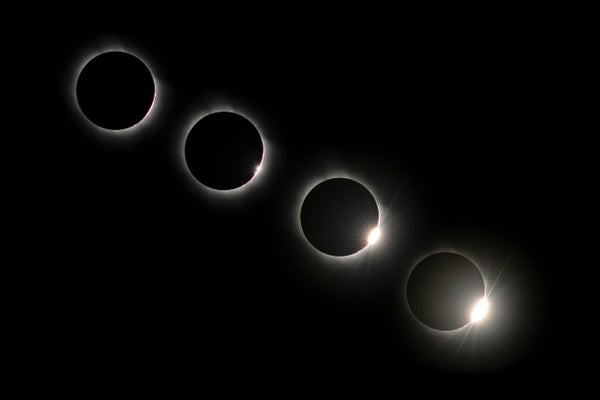How to Watch the Total Solar Eclipse Online
Will you be outside the path of totality during the 2024 total solar eclipse? What if clouds block your view? Find out how to watch the event online with this collection of livestreams

Siegfried Layda/Getty Images
This article is part of a special report on the total solar eclipse that will be visible from parts of the U.S., Mexico and Canada on April 8, 2024.
Maybe you didn’t know that a total solar eclipse would cross North America on April 8. Maybe you won’t be able to travel to an area in the path of totality. Maybe your view will be obscured by clouds.
Never fear: if all else fails, you can watch the rare spectacle online, thanks to a handful of livestreams designed to share the eclipse with viewers around the globe.
On supporting science journalism
If you’re enjoying this article, consider supporting our award-winning journalism by subscribing. By purchasing a subscription you are helping to ensure the future of impactful stories about the discoveries and ideas shaping our world today.
First up, check out Scientific American’s own livestream. We’ll be offering a view of the eclipse that you can’t catch from anywhere on the ground, even with a “perfect location” and clear skies: a team of researchers will be using two jets from NASA’s WB-57 High Altitude Research Program that were converted into high-flying telescopes to chase the eclipse for science.
When the team made its first eclipse flight during 2017’s coast-to-coast spectacle, the scientists produced high-resolution images of the sun’s outer atmosphere, or corona, in a wavelength of light in which it had never been captured before. By flying along the path of totality, the researchers also stretched their view of this total solar eclipse to about seven and a half minutes—despite the fact that no place on Earth experienced totality for longer than two minutes and 42 seconds.
This spring’s eclipse is even more promising because it will last up to four minutes and 28 seconds on the ground. In the jet-based observation effort, the researchers hope to stretch that to eight minutes aloft. And during their flight this eclipse, the planes will carry upgraded instruments. The jets will also be equipped with new experiments, including one used to study material leaving the sun, such as the blobs of plasma and magnetic field dubbed coronal mass ejections and the steady stream of charged particles known as the solar wind.
Our broadcast of views of the eclipse will have plenty of company. Check out these other options for watching the event on April 8—without needing to worry about protecting your eyes with eclipse glasses.
Keep in mind that the partial eclipse will begin over the Pacific Ocean at 12:27 P.M. EDT and will make landfall over Sinaloa, Mexico, about half an hour later. Totality will begin there at 2:07 P.M. EDT and will reach Texas 20 minutes later. It will end over the Canadian island of Newfoundland at 3:46 P.M. EDT. The partial eclipse will also end over Newfoundland at 4:48 P.M. EDT.
NASA
NASA is offering a handful of webcasts for the 2024 eclipse, including versions with English- and Spanish-language commentary and telescope feeds from across North America. The agency will also be presenting broadcast of three sounding rockets that will launch from Virginia during the eclipse to study how the atmosphere responds to the phenomenon.
NSF
The National Science Foundation (NSF) will also broadcast the eclipse, beginning at 1:55 P.M. EDT on April 8. During the event, NSF researchers will talk about the science of the sun and the agency’s Daniel K. Inouye Solar Telescope in Hawaii, which is the largest solar telescope on Earth.
Additional webcasts
-
Time and Date will livestream the total solar eclipse beginning at 12:30 P.M. EDT
-
Lowell Observatory in Arizona will broadcast the view from Waco, Tex.
-
The Exploratorium in California will livestream in both English and Spanish, with views from Junction, Tex., and Torreón, Mexico.

